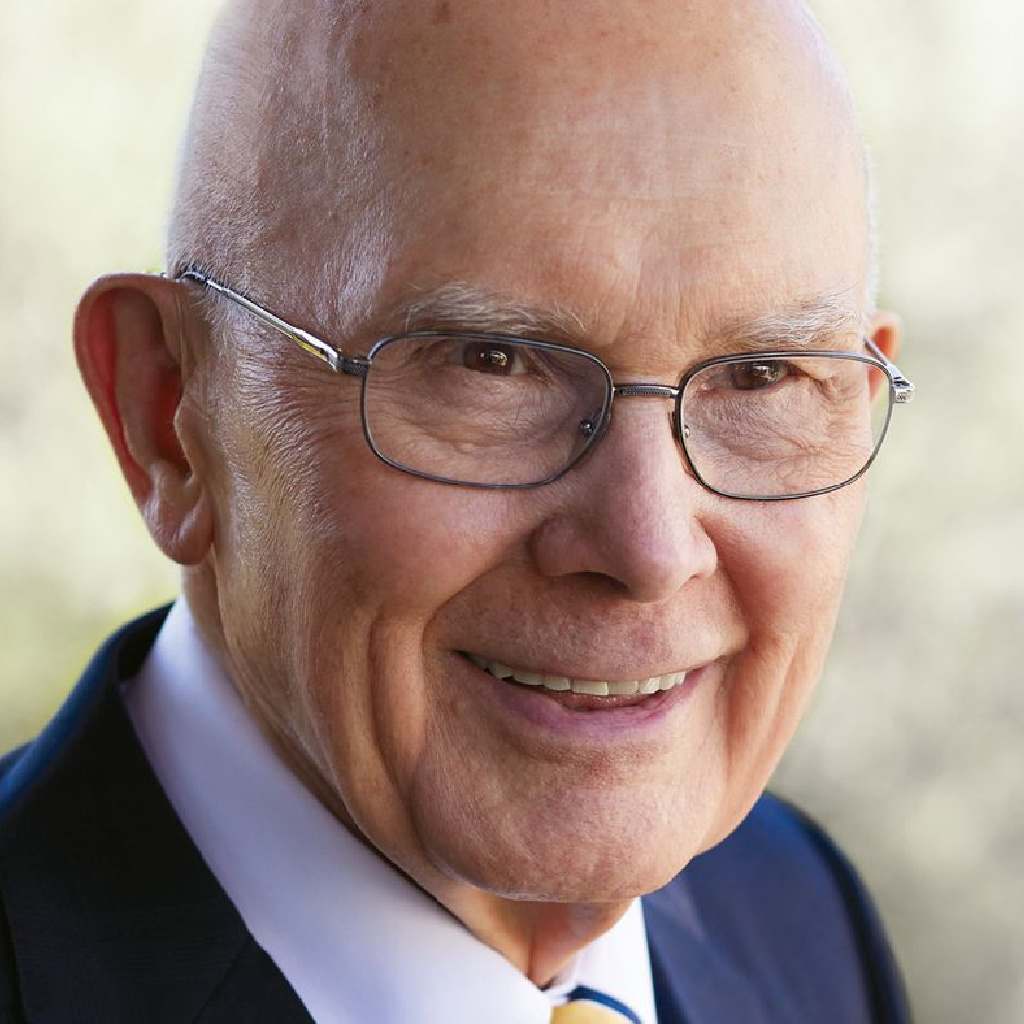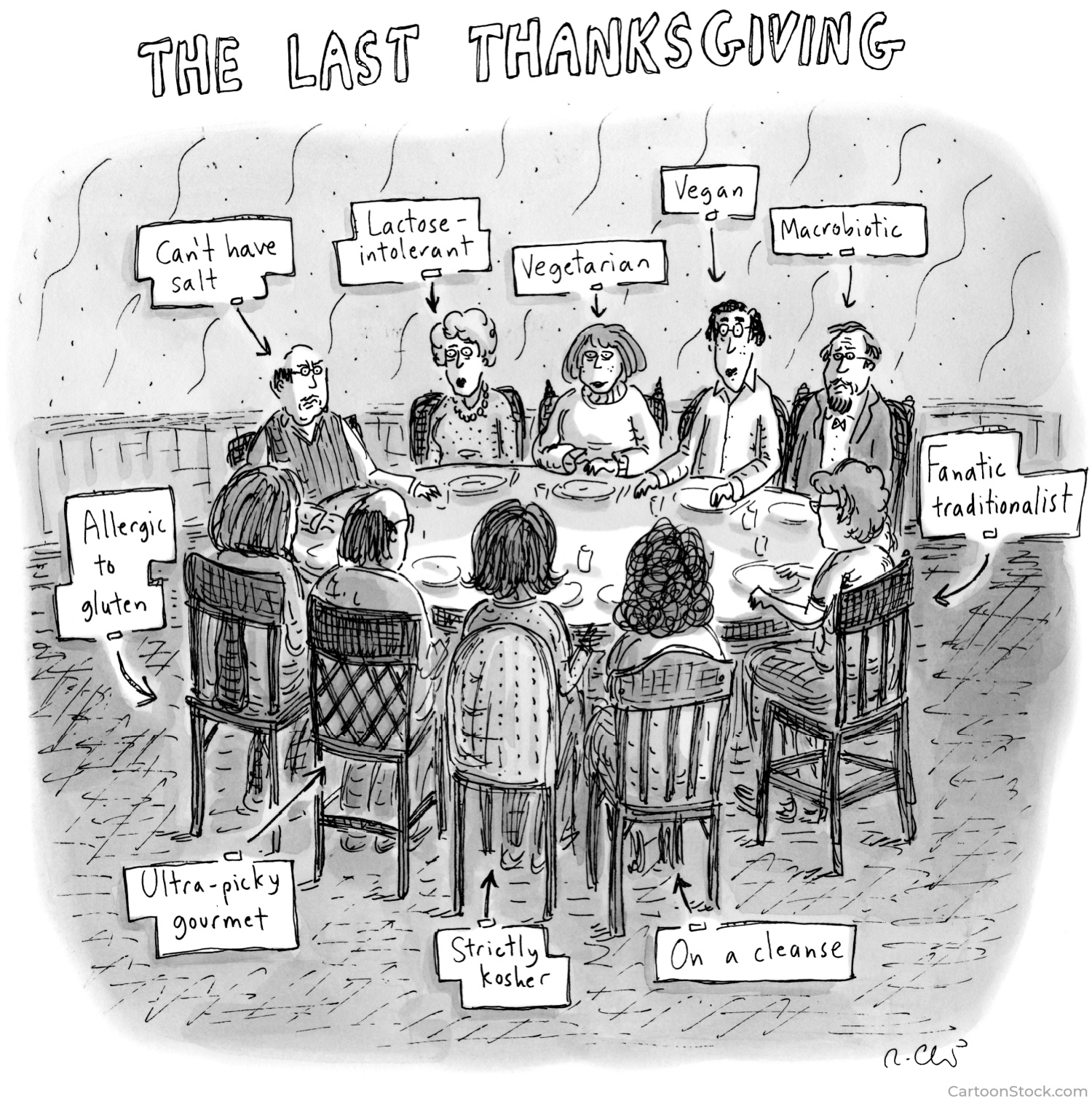Christ did not make Emma Smith a witness to the Book of Mormon or endow her with apostolic authority. But Section 25 shows that he elevated Emma in other areas of great social and religious import. This is evidenced in the call “to expound scriptures, and to exhort the church” (Doctrine and Covenants 25:7). The Prophet specified during the founding meeting of the Relief Society in 1842 that Emma was “ordained,” meaning set apart, to “expound the scriptures to all and to teach the female part of [the] community.”
The clause “to teach the female part of [the] community” suggests that even the Prophet may have missed the encompassing, churchwide nature of the call, and may even have set an unfortunate precedence for future readings of Doctrine and Covenants 25:7. There is evidence, as we will see, that this may also have been because he was not totally above the fray when it came to women’s involvement in religions, even though he acted as the Lord’s spokesperson in a revelation that empowered a woman.
Of course, the Relief Society was organized some twelve years after section 25 was revealed. It made sense in that context that the Prophet should specify that it was Emma’s role, by virtue of her calling as elect lady, or president, to teach the sisters placed under her leadership. In spite of how the Prophet’s specification would later be understood, it did not affect the call—from Christ —for Emma to “expound the scriptures” and to “exhort” all in the Church. Through this call, Christ empowered Emma to help Church members—male and female—access the hidden meanings of holy writ. And that was no small thing.
Emma’s Christic commission was one of ministerial function in the 1830 context of the revelation. At that time it was the role of preachers and exhorters, sometimes duly licensed, to explicate scripture and exhort individuals to be better Christians. Such a call then was disruptive of the norms, as for the compilation of hymns, even though the presence of female preachers in the religious landscape was not totally unusual.
Women like Joanna Bethune and Isabella Graham, her mother, had played “an especially active and determinative role” in the rise of the American Sunday Schools between 1803 and 1824. We also know that during the period of “the hymnodic revolution that had swept through America” between 1780 and 1830 that “more than one hundred women crisscrossed the country as itinerant preachers.” Like their male counterparts, some female preachers were constantly on the road because they did not have a pulpit. However, Emma’s call to expound scripture and to exhort the Church logically came with a pulpit because the call was obviously meant to strengthen the Church qualitatively from within and not quantitatively through missionary work. The mere idea of women praying in public horrified some of the greatest luminaries of the day.
The number of female preachers and teachers involved in the Sunday School movement does not mean that the context of Emma’s call was one in which women were wholly accepted in religious life. The pulpit was still considered a “masculine space,” as Catherine Brekus puts it, a ground of bitter theological battles, even within the few denominations that tolerated female preaching. The mere idea of women praying in public horrified some of the greatest luminaries of the day. Peter Cartwright, a prominent revival preacher between 1803 and 1856, informs us that there were “fashionable objections to females praying in public” in the Methodist Episcopal Church to which he belonged. In 1827 Asael Nettleton stood against such revivalist fathers as Charles Grandison Finney who was accused of having introduced in revivalism “the practice of females praying with males,” among other “new measures,” and of “rais[ing] an angry dispute,” “a civil war in Zion—a domestic broil in the household of faith.” Lyman Beecher, Harriet Beecher Stowe’s father, concurred with Nettleton. “There is no instance in the patriarchal age, of a woman offering sacrifice as an act of worship, and a symbol of prayer; and none in the tabernacle or temple service,” he argued.
The suggestion made earlier that Joseph probably did not understand the encompassing nature of Emma’s call to expound scripture and exhort the Church rests on the fact that he did share somewhat in those popular views expressed by Beecher. In fact, female prayer for Beecher could eventually be tolerated only on the condition that even in matrimonial bonds, “it was the wife apart, and the husband apart”—they could not pray together. Otherwise, he insisted, “no well-educated female can put herself up, or be put up, to the point of public prayer, without the loss of some portion at least of that female delicacy …; and whoever has had an opportunity to observe the effect of female exhortation and prayer in public, will be compelled to remark [upon] the exchange of softness and delicacy for masculine courage, so desirable in man, so unlovely in woman.”
The last part of Beecher’s argument refers to the highly demonstrative and physical aspect of exhortation in the context of revivalism. Overall, though, those who opposed the involvement of women in pastoral life, even in areas that did not require ordination or a degree in theology, were never without an excuse. As Beecher and Nettleton saw it, the involvement of women was the ruin of the churches; religious matters were deemed too sacred to be left to women because everything in them, from their tone to their physical appearance, made them a source of such distraction that rather than edifying, their presence at the pulpit was equated to its defilement. Indeed, the view of the most adamant ministers was that women who dared to take the pulpit in the presence of men “were no better than prostitutes.”
Such strong language was certainly informed by two concepts: (1) the belief that with Eve—the archetypal woman—came sin and the demise of the Edenic world, and (2) the Pauline injunction to “let your women keep silence in the churches” and to ask their husbands questions “at home: for it is a shame for women to speak in the church” (1 Corinthians 14:34–35). In that context, even though the dynamics in the American religious landscape tended toward greater inclusion of women, Emma’s call to exhort and to expound the scriptures to everyone in the restored Church of Jesus Christ placed her in a position that was socially avant-gardist. That position arguably reveals more about Christ and his plan for women in His Church than is usually assumed. Through that revelation, Christ steers the Church back on a trajectory of greater inclusivity by suspending the injunction, which may have been unduly attributed to Paul, to bar women from speaking in churches and from holding institutional positions.
Emma as Hymn Compiler and Organizer of Worship
Beyond Emma’s role as president of the Relief Society, Rachel Cope has shown how the title of “elect lady” also applied in her assignment “to make a selection of sacred hymns … to be had in my church.” Emma was “a unique exception” in religious America, Cope writes, because in that context hymn selection was a territory dominated by male preachers since immense practical and theological power came with it. It is amply documented that hymns were so important and sought after by believers that “instead of hunting up a college or Biblical institute,” itinerant preachers of the Methodist tradition—a group with which Latter-day Saints share a great deal—relied on a most important library that consisted of three items: the Bible, a hymnbook, and a copy of the “Discipline,” the Methodist “handbook of instructions.”
Coming from the Methodist tradition, Emma surely understood the significance of hymn singing in worship. Michael Hicks proposes that “since choosing songs to be sung was often the duty of a congregational singing master, the revelation may have been designating Emma to lead the tunes.” This reading is irreconcilable with the clause “make a selection” that is used in the revelation. Another possible reading is that through the call, Christ made Emma both conductor of church meetings and his officiator in a special ritual. As Christ’s officiator, we can say that she symbolically welcomes and leads the ceremony for every Latter-day Saint who opens a hymnbook. The act of opening the hymnbook can then be compared to leaving behind a profane world and stepping into “a sacred space” in which, through a ritual of prayer that takes the form of a “song of the heart,” Latter-day Saint worshippers then and now present a righteous devotion that delights the very soul of God.
As in all rituals, the validity of singing as a ritual rests on certain rules: the verse explicitly tells about the conditions worshippers have to be in (righteous) and how to sing (from the heart) so that their worship can delight the soul of the Lord. But these rules also imply that Christ placed a tremendous responsibility on Emma in calling her to compile hymns for the Church. The successful performance of the ritual—and to a certain extent of the whole religious service—depended on her ability to choose songs that participants would embrace without reservations and would intone as though they were personal prayers that had originated in their hearts.
The novelty and uniqueness of a woman tasked with selecting hymns probably explain why John Whitmer—who is believed to have authored the introduction to the revelation in the 1833 Book of Commandments—specifically mentions “A Revelation to Emma [Smith] … giving her a command to select Hymns” and silences the remaining aspects of the revelation behind an “&c.” Indeed, this method of abbreviation is generally used in long book titles. Unfortunately, this summary, which emphasizes hymn compilation—though already a major move—has become the main aspect of this elect lady revelation that succeeding generations of Latter-day Saints retain. Because of that, the header may be said to have both oriented how the revelation is read and limited its scope.
Compiling hymns is, however, merely one of the many ways in which Christ empowers those who, on account of their gender and social standing, were precluded from greater involvement in religious life.
Doctrine and Covenants 25 as Revelation for the Emmas of Christ’s Church
As hinted at, I concur with Carol Cornwall Madsen’s view that while “[the] specifics [of Doctrine and Covenants 25] are addressed to Emma, its principles are applicable to all” because of its canonization as scripture. Joseph Smith, who acted as mediator between Christ and Emma, insisted on that universal dimension when he declared that “not [Emma] alone, but others, may attain to the same blessings” or privilege to expound scripture and exhort the Church. Christ may have been pointing to that universal dimension in concluding the revelation with the phrase “this is my voice unto all” (emphasis added). Surely, there is ground to read “others” and “all” in the broad universal sense of “male and female.” After all, the first verse of the revelation begins by indicating that “all those who receive my gospel are sons and daughters in my kingdom.” When it comes to empowerment, however, “others” and “all” may generally be read more narrowly to refer to the women of Christ’s Church. The revelation then stands as a reference point, the basis for a pattern of female participation and empowerment in Christ’s Church.
With that understanding in mind, readers of the revelation logically come to see Emma as Christ may have viewed her: a type, and a model for all, especially for the female body of the Church. The revelation then stands as a reference point, the basis for a pattern of female participation and empowerment in Christ’s Church. As mentioned previously, in that 1830 revelation, when Christ was laying the foundation of His Church once again on the earth, He freed Latter-day Saint women from the Pauline injunction not to speak in church. The revelation has a double significance in that it tacitly allows Latter-day Saint women to pray and speak on religious matters, and it explicitly mandates that they occupy the pulpit to explicate scripture and exhort the Church. This explicit mission recalls of course the responsibility entrusted to priesthood holders in a revelation given in the same organizational years “to teach, expound, exhort” the Church (Doctrine and Covenants 20:42, 46, 59). This similarity may have been part of what led Joseph to state that the Relief Society, meaning the sisters collectively, was “patterned after the priesthood.”
Another level of reading of the revelation may consist of seeing Emma as a type, a proxy for Christ. Expounding and explaining to others the hidden and true meaning of scripture is one of the activities we see Christ doing throughout his earthly ministry. In Luke 24:27, for instance, we learn that “beginning at Moses and all the prophets,” the resurrected Christ “expounded … in all the scriptures the things concerning himself ” to the disciples He had joined on the road to Emmaus. Before His Crucifixion, we learn that after reading, for instance, from Isaiah 61, “the eyes of all them that were in the synagogue were fastened on him” (Luke 4:20), obviously eager to access the true meaning of the prophecy. With authority, Christ explained, “This day is this scripture fulfilled in your ears” (Luke 4:21). Interestingly, the scripture that was fulfilled indicates that Christ, anointed by the Spirit, had come “to preach the gospel to the poor; … to heal the brokenhearted, to preach deliverance to the captives, and recovering of sight to the blind, to set at liberty them that are bruised, to preach the acceptable year of the Lord” (Luke 4:18–19). Assuming that after Christ’s own eventful ministry “the acceptable year of the Lord” encompasses “the dispensation of the fulness of times” Christ speaks about in Doctrine and Covenants 112:30, we may argue that Relief Society presidents (who continue in Emma’s stead)—and their sisters who are also elect ladies in the kingdom— act as proxy for Christ in that they are able to stand in the Church where he would have stood to “preach deliverance” to those who are spiritually “captives.” Just like the sisters’ organization is “patterned after the priesthood,” one may see in that a “pattern,” a certain coherence with what Christ may have intended in calling Emma to exhort and expound: in these specific areas, at least, the Emmas of the Church are just like priesthood holders who represent Christ at the sacrament table and other rituals.
Like Christ in the Lukan passage, Emma may be said further to have received an anointing, when set apart by the proper authority, which entitles her to the Spirit of Christ (see Doctrine and Covenants 25:7), the Holy Ghost (Doctrine and Covenants 25:8), to “preach [that is, exhort and expound] the gospel” to Latter-day Saints who are “poor [in spirit],” who are “brokenhearted” or “bruised,” to open the eyes of those who may be “blind” as to the true meaning of scripture, and to deliver those who are in a form of captivity. Doctrine and Covenants 25 is addressed to Emma, but there is in the revelation an implicit reminder for Joseph and for the larger body of the Church, the males in particular, to acknowledge the Christic mandate and authority of their sisters in the area of teaching and exhortation.
This is evidence in the modal “shalt” that precedes “be ordained,” which further confers to the calling a sense of decree, something that must come to pass in Christ’s Church. Modern prophets, seers, and revelators have made it clear that though not ordained to a specific priesthood office, a woman who is set apart to serve in the restored Church of Jesus Christ officiates under the same priesthood umbrella as do the ordained males of the Church. Like the men, those sisters are “given priesthood authority to perform a priesthood function,” affirmed Elder Dallin H. Oaks in 2014 as a member of the Quorum of the Twelve Apostles.
There is a two-fold corollary to the clarification made by Elder Oaks. The first one is that Latter-day Saints who fail to acknowledge those sisters in their divinely appointed sacerdotal functions tacitly fail to see them and the Relief Society as Joseph Smith did, as an instrument of balance and perfection in the restoration process. The second is that when Church members disregard women serving in their appointed positions, they disregard the priesthood, those who exercise the keys, and ultimately Christ, who provided for the calling of sisters.
Overall then, Doctrine and Covenants 25 shows a Christ who is consistent but who, in restoring His Church, literally repairs it and bridges loopholes in teachings that may have been brought into holy writ to marginalize women. Prior to Christ’s Resurrection, we see Him in the New Testament protecting women from ostracization, forgiving and healing them physically and spiritually (see John 8:3– 11; Luke 7:36–50). This dynamic of inclusion and empowerment is stepped up after the Resurrection: Christ “appeared first to Mary Magdalene,” we read in Mark 16:9. And, for the first time, Christ gives a woman a major commission: He asks Mary to be his envoy, to announce to “my brethren … I ascend unto my Father, and your Father” (John 20:17). That in and of itself was remarkable, considering the low social recognition women had in Mary’s culture. Like Mary, Emma was the first in modern times to be given a commission that breaks away from established exclusionary practices. Mary’s calling to announce and Emma’s calling to expound and exhort reveal consistency in a dynamic of female inclusion and empowerment and a Christ who does not change.
Conclusion
The objective of this paper has been to propose an interpretative reading of Doctrine and Covenants 25 using a reading methodology based on diachronic (historical) and synchronic (textual and intertextual) analyses.
In a religious community, social factors—such as previous religious affiliation or non-affiliation, the level of education of the adherents, and the broader tradition in general—make it so that understanding and adhering to doctrine can be easier said than done, the fruits (praxis) are not always an exact manifestation of the tree (Christ and what He reveals). And that is not necessarily because the members are recalcitrant toward a particular doctrine.
The records do not hint that the early Saints had voiced any significant opposition to Emma’s multiple divine callings at a time when female inclusion in religious life was the object of heated debates in the larger American religious landscape. Yet, there is a hiatus, a disconnect, between the revelation and its implementation in the history of the restored Church of Jesus Christ. As noted by Marianne Holman Prescott, for a long time the early Saints followed “most other Christians in their day” and because of that, except in a few cases, they “reserved public preaching and leadership for men.” To that may be added the frustration created by the fact that women were not even invited to pray in the general conferences of the Church until April 2013.
These restrictions have had ripple effects in and outside of the Church, fueling the sentiment that only the voice of “the brethren” matters in The Church of Jesus Christ of Latter-day Saints and that it was conceived and exists for modern patriarchs. But Holman Prescott also documents an evolution within the Church that consists in aligning more with the spirit of revelations that mandate the inclusion of women, a subject on which the apostolic voice of M. Russell Ballard, for instance, has been raised more than once and in multiple venues of the Church and its institutions.
Aside from prayer and teaching and participation in the Church’s temple rituals, women now sit as permanent members on several Church councils, most notably the Board of Trustees of the Church Educational System (the General President of the Primary and the General President of the Relief Society, who is also a member of the more reduced Executive Committee), on the Priesthood and Family Executive Council (General President of the Relief Society), Missionary Executive Council (General Young Women President), and the Temple and Family History Executive Council (General President of the Primary). In September 2018 the youth of the Church worldwide were presented with two well-trained and faithful historians—including a woman—to whom an apostle deferred by letting them address historical issues. About a year later, President Nelson announced a change in Church policy allowing women who carry a temple recommend to stand as witnesses for baptisms and temple sealings. Interestingly, all of these forward-looking decisions actually bring the Church more in line with authorized precedents and the spirit of empowerment that is found in Doctrine and Covenants 25. It is to be assumed that this trend will not only continue but that the leaders will further educate the membership of the Church so that their practice reflects even more what Christ has revealed for the equilibrium and full flourishing of His restored Church.

















